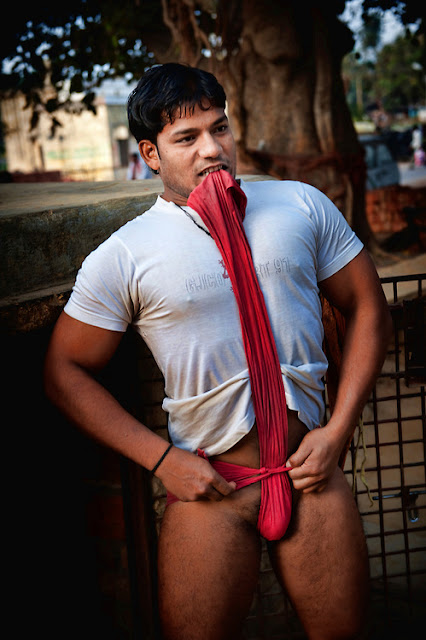get wrapped up in Japan's oldest menswear! Fundoshi (褌) is a simple length of fabric worn as a loincloth in Japan for over 1,200 years. 褌を締めてかかる
30 August 2016
Lingering on Langots
The Indian subcontinent has a fundoshi analog, the langot. While there are some basic structural differences, there are also definite visual similarities, especially from the front view. Langots are frequently seen oh pehalwans, wrestlers in the ancient fraternal art of kushti. It is also the garb of ascetics who forsake all worldly possessions besides a simple loincloth.
Subscribe to:
Post Comments (Atom)























5 comments:
I'd love to know how to tie up a Langot. :D
Excellent photos. Oneself gets motivated to take exercise and sharing photos in a sexy loincloth such as a fundoshi or a langot. xD
Ryan do you still have that video I sent you of me tying the langot on?
My computer had to be updated and I lost it long ago. If you still have it, please feel free to pass it on to JOshua.
I think I do. I try not to delete things like that so it is probably somewhere in our long thread of e-mails! It may take some time to nail it down, but when I do I will pass it along.
THis is a stunning post Ryan. Each cultural identitiy is captured succinctly in either fundoshi or langota. Fundoshi represents the austere toughness beneath the elegant simplicity that is uniquely Japanese. Langota portrays a softer, more curvaceous and covering, yet the masuclinity is still evident. In a manner typical of the subcontinent a masculine/feminine duality is expressed.
Thank you. One of the things I like about posting about langots is the rich color palette of reds and oranges and earth tones, sometimes with a dash of turquoise or yellow. These are very sensual, very traditional, very masculine images. I'm inspired by the discipline of these young men.
Post a Comment